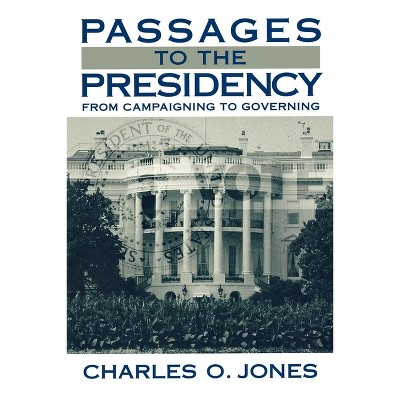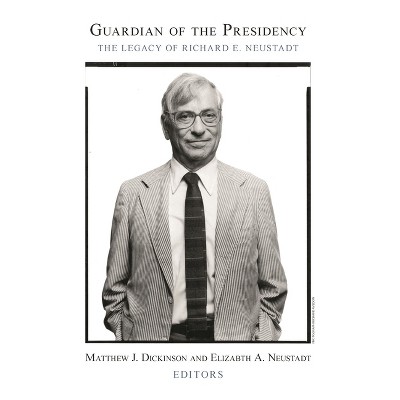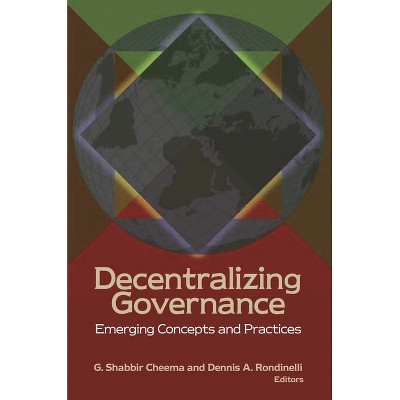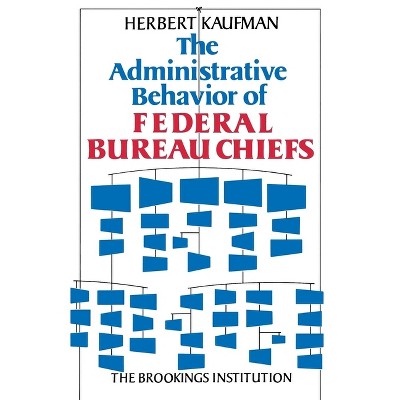Presidency in a Separated System - 2nd Edition by Charles O Jones (Paperback)

About this item
Highlights
- "Media coverage and popular interpretations of American government typically concentrate on the presidency.
- About the Author: Charles O. Jones is a nonresident senior fellow in Governance Studies at the Brookings Institution, the Hawkins Professor of Political Science (emeritus) at the University of Wisconsin, and a former president of the American Political Science Association.
- 422 Pages
- Political Science, American Government
Description
About the Book
"Media coverage and popular interpretations of American government typically concentrate on the presidency. Observers often attribute the fortunes of an entire government to one person or his small circle of advisers. In an updated and revised edition of his classic ...
Book Synopsis
"Media coverage and popular interpretations of American government typically concentrate on the presidency. Observers often attribute the fortunes of an entire government to one person or his small circle of advisers. In an updated and revised edition of his classic book, Charles O. Jones explains how too exclusive a focus on the presidency distorts the picture of how national government really works. He explores how presidents find their place in the permanent government and how they are ""fitted in"" by others, most notably those on Capitol Hill. Powerful though it may be, the Oval Office is not the source of all authority in government. Jones examines the organizational, political, and procedural challenges facing presidents, as well as the role of public approval. The author compares the post-World War II presidents and identifies their strengths and weaknesses in working within a separated system of government. The new edition extends through the Clinton and George W. Bush presidencies. It explains how split-party control, differing partisan strategies, and our recent ""narrow-margin politics"" have changed the Washington landscape, reshaping relations among the branches of government. Once again, in this edition, the author draws several lessons for presidents working in a separated system. Most have heeded these lessons, while analysts often ignore them in favor of perpetuating unrealistic expectations of what presidents can do. ""Jones has achieved a major milestone in research on the role of the president in the legislative process."" -Journal of Politics ""Jones has effectively and authoritatively replaced a popular view of the American presidency with a more accurate one. His argument and his evidence will enlarge and enrich our thinking about the office."" -Richard F. Fenno, Jr., University of Rochester
"From the Back Cover
Popular interpretations of American government tend to center on the presidency. Successes and failures of government are often attributed to presidents themselves. But, though the White House stands as a powerful symbol of government, the United States has a separated system intentionally designed to distribute power, not to concentrate it. Charles O. Jones explains that focusing exclusively on the presidency can lead to a seriously distorted picture of how the national government works. The role of the president varies widely, depending on his resources, advantages, and strategic position. Public expectations often far exceed the president's personal, political, institutional, or constitutional capacities for achievement. Jones explores how presidents find their place in the permanent government and how they are "fitted in" by others, most notably those on Capitol Hill. This book shows how a separated system of government works under the circumstances created by the Constitution and encouraged by a two-party system. Jones examines the organizational challenges facing presidents, their public standing and what it means, presidential agendas and mandates, and lawmaking - how it works, where the president fits in, and how it varies from issue to issue. He compares the post-World War II presidents and identifies the strengths and weaknesses of each in working within the separated system. Jones proposes a view of government that accepts divided government as a legitimate, even productive, form of decisionmaking and emphasizes the varying strategies available to presidents for governing. He concludes with a number of important lessons for presidents and advice on how to make the separatedsystem work better.Review Quotes
"Jones's ability to engage the scholarly literature and to integrate recent work on the presidency into the second edition adds to the overall utility of this work...The framework of this book remains a crucial contribution to the study of American government." --Jessica M. Steiner, University of Virginia, "Journal of Politics"
About the Author
Charles O. Jones is a nonresident senior fellow in Governance Studies at the Brookings Institution, the Hawkins Professor of Political Science (emeritus) at the University of Wisconsin, and a former president of the American Political Science Association. His books include Clinton and Congress, 1993-96 (University of Oklahoma Press, 1999) and Passages to the Presidency (Brookings, 1998).










